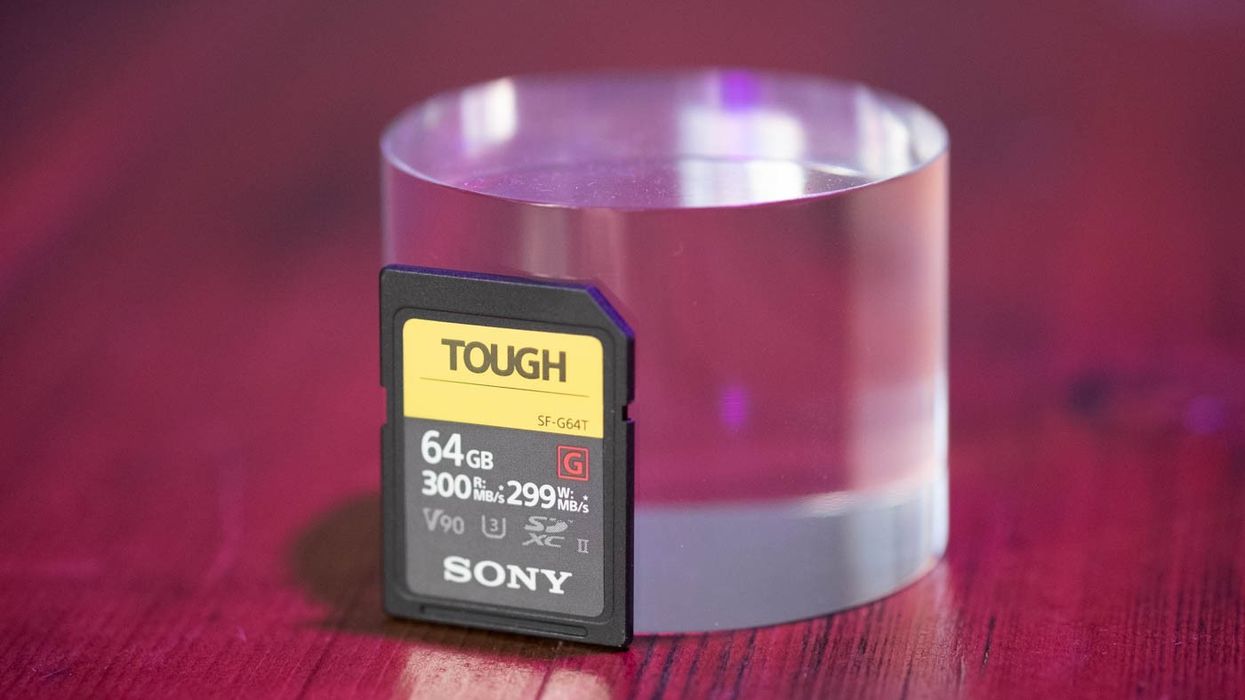Field Test: Sony's Tough SD Card is Extremely Durable
By giving up the write-protect switch and going for tougher plastics, Sony creates more security for those of us tough on gear.

When Sony first offered us a review of the Sony Tough SD card, I thought "how would I ever test an SD card?" Obviously, of course, I could run the disk speed test from Blackmagic to see precisely how fast it could write images, but it really is just a normal SD card in speed tests. I could obviously shoot with it and see about its usefulness in the real world.
But neither of those are the marketing hook for the Tough SD; the new card is exciting for its durability. I then remembered: I have, on more than one occasion, ruined an SD card by accidentally breaking the "write-protect" switch. Once that little nubbin of plastic goes, the card is out for the count. It's effectively trash, with whatever is stored on it unreadable. This made me realize, maybe it's worth it to spend a little more money for a card that could last 4-5 times as long.
Immediately upon taking the Tough SD out of its case, you will notice the difference. It's not only the lack of a switch, which Sony ditched to avoid that point of vulnerability. The entire thing is clearly made out of a tougher, stronger plastic. There is none of the flex associated with a normal SD card, the gentle "give" when you squeeze it. This is a single unit that feels tough and strong, designed for lasting longer than other cards.
On a whim, I immediately dropped it on the ground and rubbed it with my shoe. Why not, right? I am a camera reviewer, after all, and I don't get to do that with lenses. I should be able to do that with SD cards.
From there, I put it in my camera and shot everything I could for a week: every still, and hours of video, with no problems. While that, of course, is normal for an SD card, the key here is the price. A normal Sony SD card is only about $10 cheaper than the tough. If the tough saves any of your photos (or lasts 10% longer than the normal card), it's clearly worth it. Unless you use the write-protect switch regularly (and some of you do!), then it makes sense to switch over.
Other than the slight price bump and the lack of the switch, it might be slightly heavier than a "normal" card, but honestly my scale couldn't even register a difference. This should be the new format for SD cards. They should all be this tough. In the meantime, the next card we buy probably won't have a write-protect switch on it.
Available now.
Tech Specs:
- UHS-II
- Read Transfer Speed Up to 300 MB/s (HD312), up to 95 MB/s (SDR104) Write Transfer Speed Up to 299 MB/s (HD312), up to 90 MB/s (SDR104)
- Operating Temperature Range -13 to 185 deg. F (-25 to 85 deg. C)
- Speed Class Class 10 (SD Speed Class), Class 3 (UHS Speed Class), V90 (Video Speed Class)
- Dimensions (WxHxD) 0.94 x 1.26 x 0.08" (2.39 x 3.20 x 0.20cm)

















